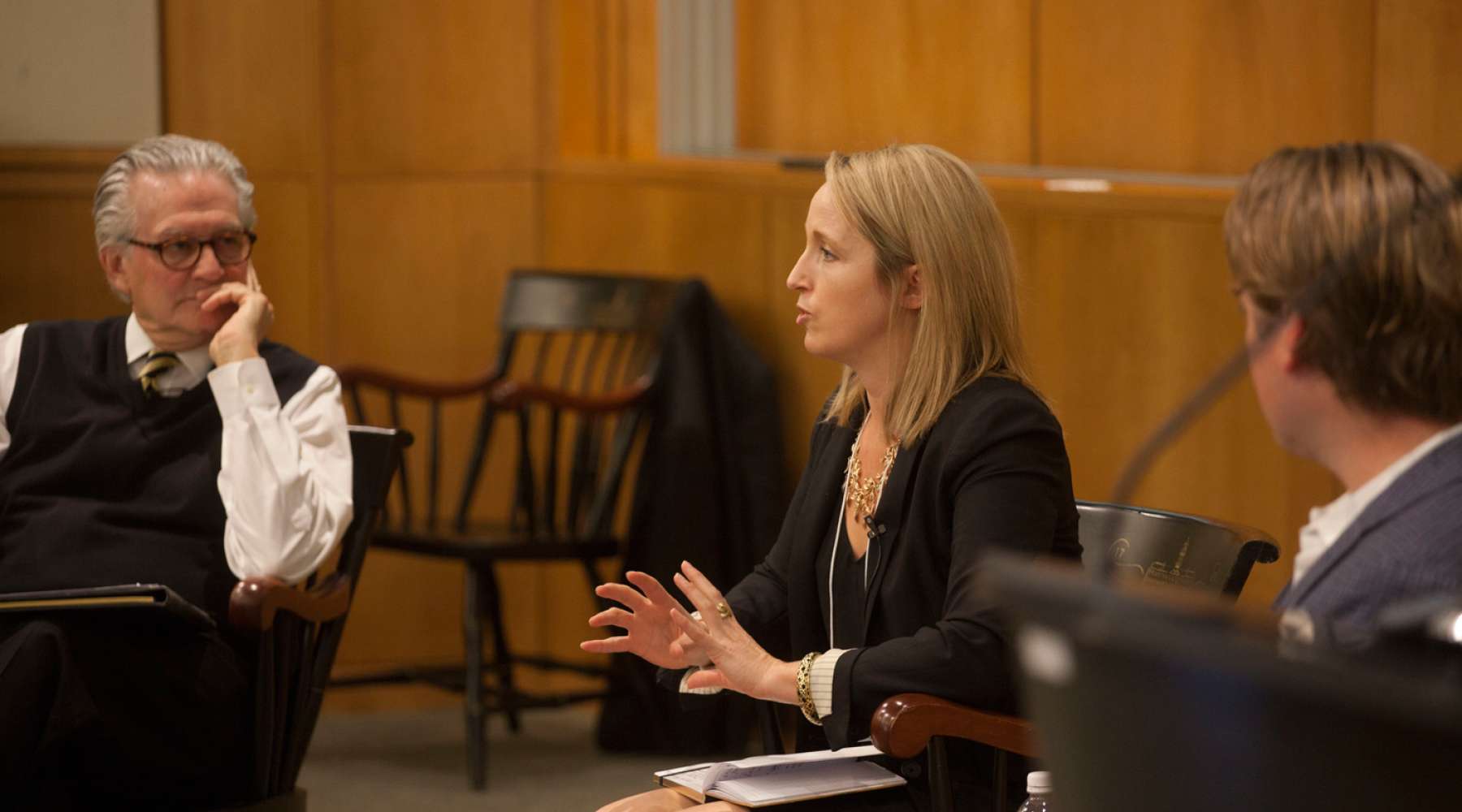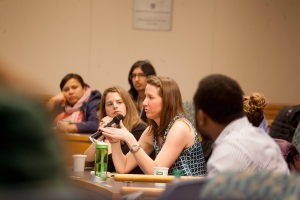
 The Tuck Business and Society Conference (BSC) this year asked attendees to consider what “Business Not As Usual” means. One of the most intriguing events of the day for me, a sometimes-baffled, ever-hopeful student of business and society at Tuck, was a revealing Q&A with retail giant Wal-Mart, represented at the conference by head of U.S. Pricing Strategy, Tim Robinson and head of Stakeholder Relationships, Katherine Neebe.
The Tuck Business and Society Conference (BSC) this year asked attendees to consider what “Business Not As Usual” means. One of the most intriguing events of the day for me, a sometimes-baffled, ever-hopeful student of business and society at Tuck, was a revealing Q&A with retail giant Wal-Mart, represented at the conference by head of U.S. Pricing Strategy, Tim Robinson and head of Stakeholder Relationships, Katherine Neebe.
Wal-Mart is the largest retailer by revenue ($480 Billion) and employs a staggering 2.2 million people around the world. It is not immediately recognized or praised for its success in sustainability and, perhaps due to ignoring important conservation issues in its past and a responsibility to keep its shareholder-base happy, keeps a low profile.
But Wal-Mart has been making changes: galvanized into action after its home region and original core-customer base in the Gulf was devastatingly impacted by Katrina in 2009, Wal-Mart has decided on permanent action, targeting zero waste in the coming decades, incentivizing executives and managers to implement sustainable practices and working—with the lofty goal of doing so with the buy-in of its mammoth supply chain.
Wal-Mart’s Sustainability Index helps it identify pieces of the chain that need work. Meanwhile, it uses the power of incentives to compel executives and managers to implement new sustainable practices.
Herein lies an obvious dilemma: how to motivate comfortable, long-term players in its supply chain to adopt new practices?
Wal-Mart refrains from developing new “organic” products, avowing that shelf-space for two varieties of the same brand product (regular and organic) is inefficient, and that it lacks the customer-base that would appreciate the effort. However, its power as a monopsonist gives the company leeway to compel suppliers to implement more sustainable measures to develop their regular product, thereby eliminating the risk the customers will be turned off by healthy facsimiles of the products they love.
Central to Wal-Mart’s sustainability effort is the Midwest Row Crop Collaborative with the ambitious goal of eliminating 9 million metric tons in greenhouse gases by working with partner farmers over a geographic spread of 23 million acres.
Wal-Mart and its farmers admittedly have something in common: a (formerly) long-standing resistance to change. So now that the retailer is turning the dial, how can it reach the very beginning of the supply chain? In terms Wal-Mart can spell out clearly: better profits. The biggest culprit of environmental harm on farms is pricey fertilizers which run off farms and contribute to barren “dead zones.” These hurt the farmer, the product, and the environment.
Of course, another looming beast is the major waste Wal-Mart generates every year, which amounts to $2.6 trillion in annual loss. Its ambition is to become a zero-waste firm in the coming decades, bringing its supply chain with it.
Change takes time when you are a $480 billion firm, but as sustainable practices become more and more critical to firm success, Wal-Mart has lofty and important goals to achieve. And for all MBAs hoping to make an impact in the future, the looming lesson of Wal-Mart remains: how to improve a firm’s sustainably without losing share-holder value.
The 15th annual Business & Society Conference, “Business Not as Usual,” was held February 23-24. The Tuck Center for Business, Government & Society supports the annual student-led conference which brings together leaders from a wide range of fields to discuss the important role that business leaders can play in creating a more sustainable world. This year’s conference focused on how the business community can effect change in the social sphere. Learn more about the Center for Business, Government & Society.